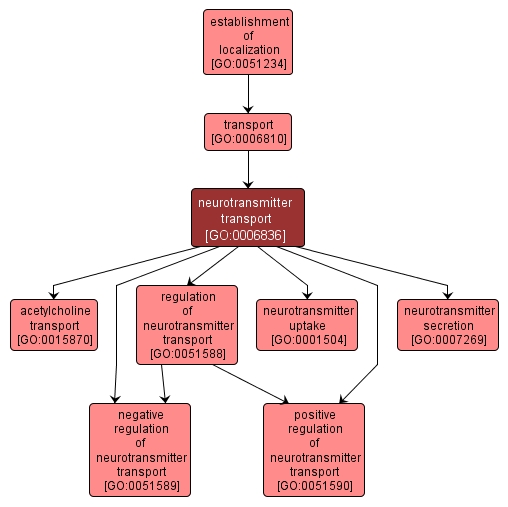| Desc: |
The directed movement of a neurotransmitter into, out of, within or between cells by means of some external agent such as a transporter or pore. Neurotransmitters are any chemical substance that is capable of transmitting (or inhibiting the transmission of) a nerve impulse from a neuron to another cell. |














